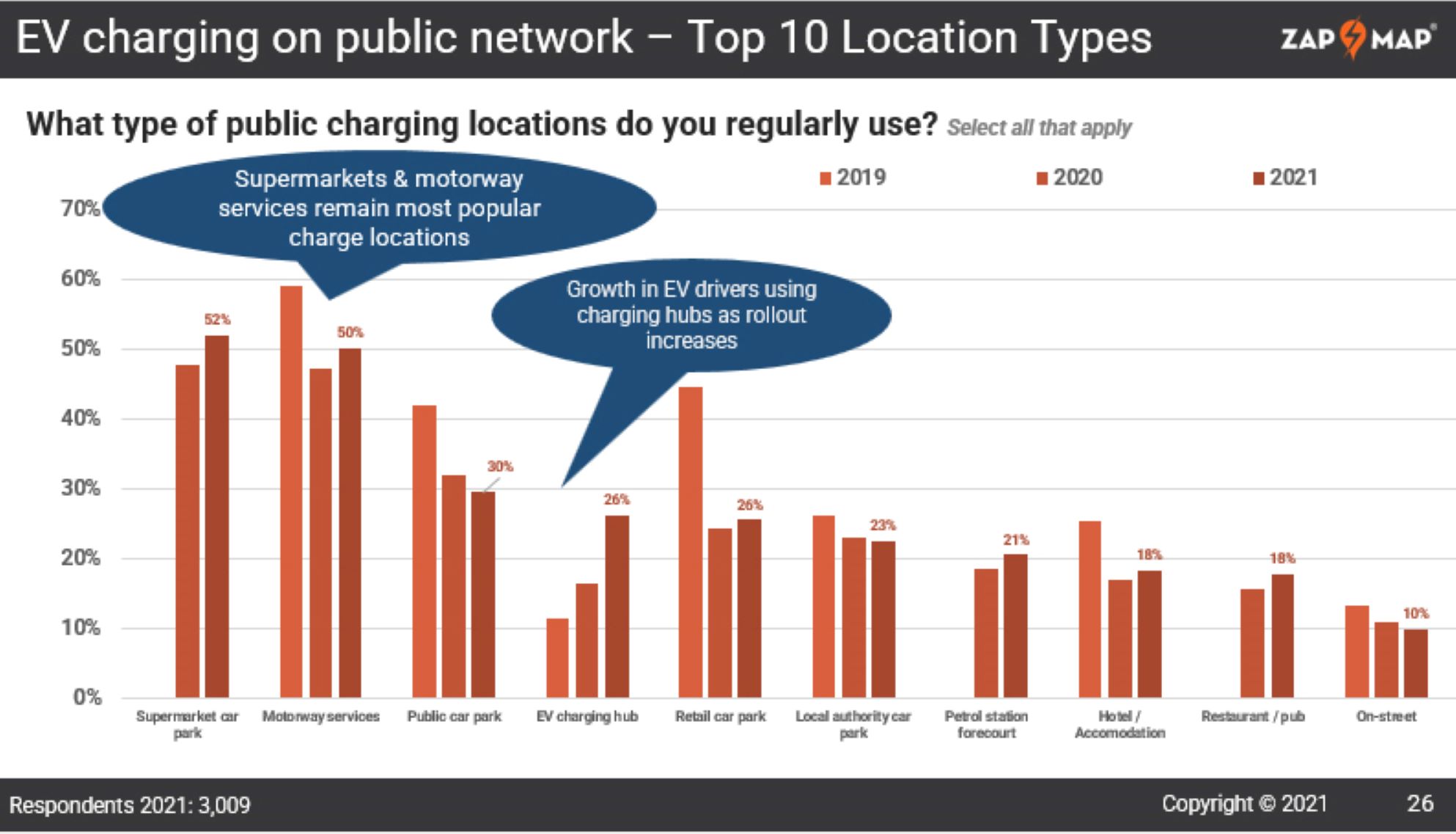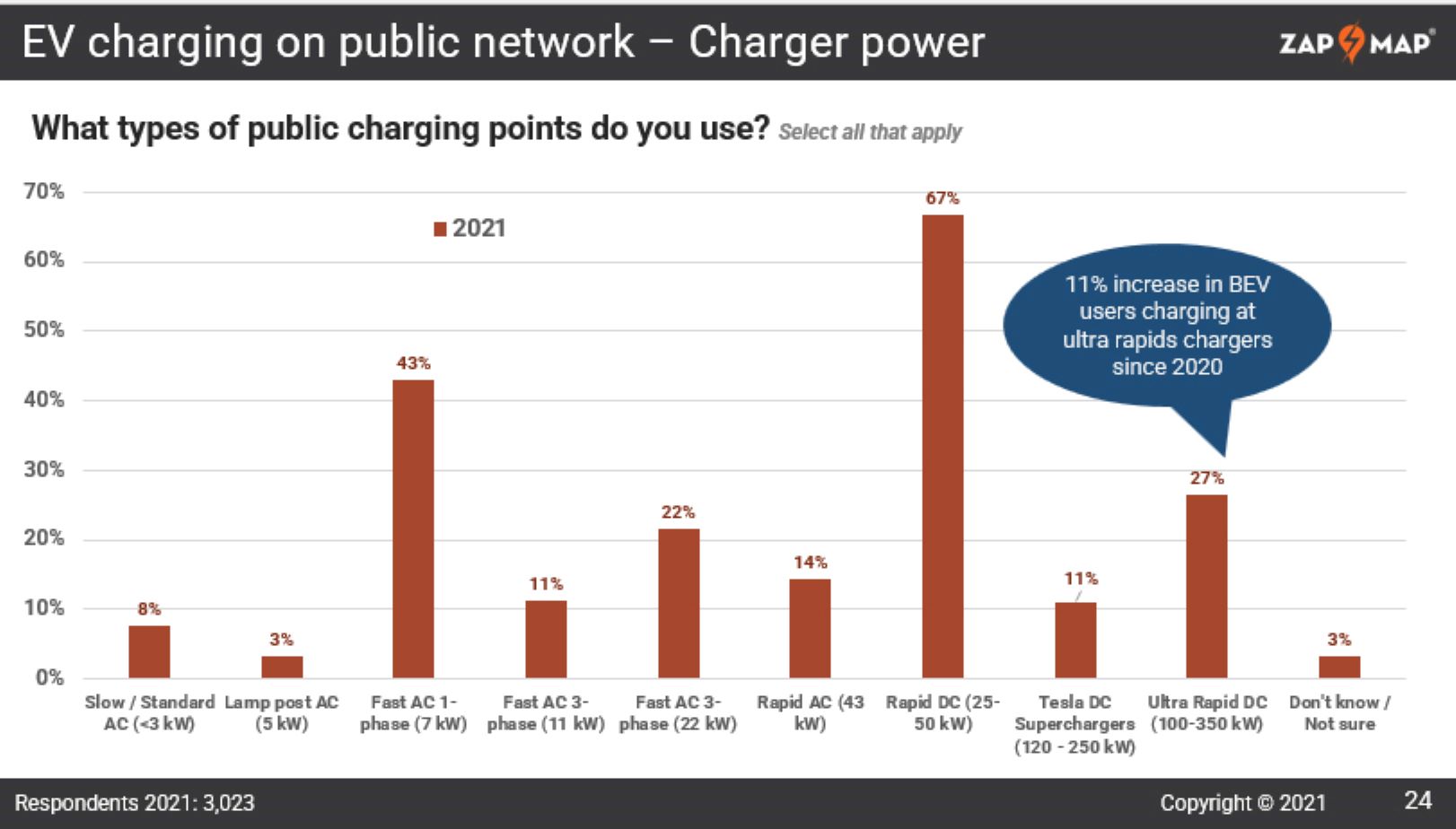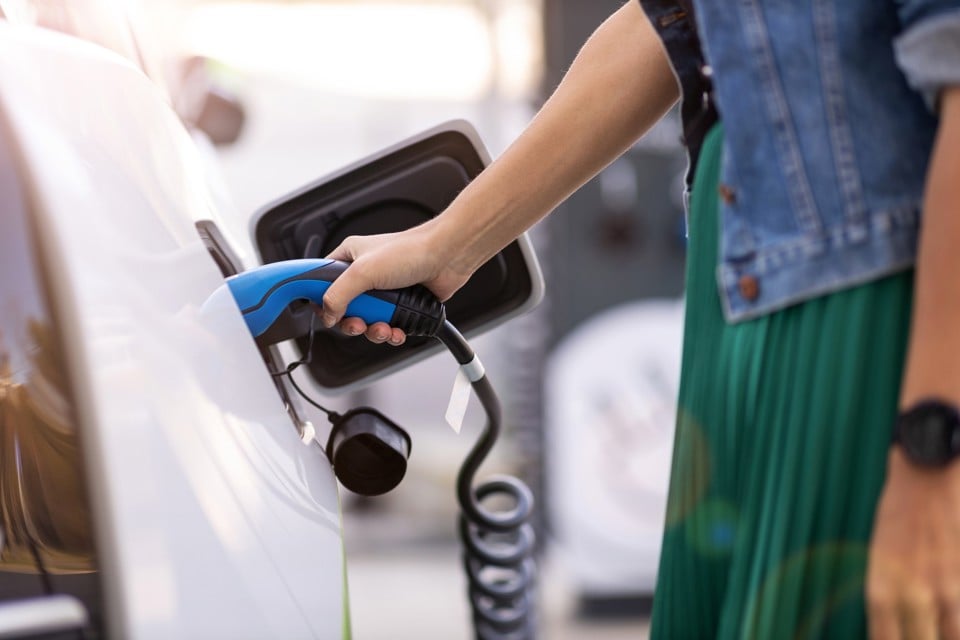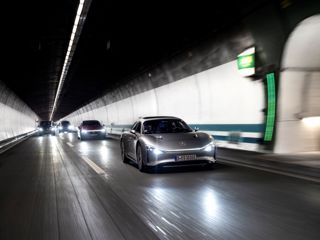The vast majority of electric vehicle (EV) drivers (93%) use the UK’s public charge points, with 40% using public chargers at least once a week, new data from Zap-Map suggests.
The company’s annual EV Charging Survey also found a significant increase in both the installation and usage of high-powered – also known as ultra-rapid – charging devices across the country in 2021.
While rapid chargers (25kW – 99kW) are still used by the most EV drivers overall, the survey found that the usage of ultra-rapid chargers jumped to 27% of EV drivers – up from just 16% in the previous survey.
In part, Zap-Map says that this increase in usage is being driven by the growing number of ultra-rapid chargers that are now available to use, with the number of ultra-rapid devices available growing by 60% in 2021.
There were also more than 400 new rapid and ultra-rapid chargers from over 22 different networks added to UK network in first quarter of this year.
However, it also provides a clear indication that the new ultra-rapids are fulfilling demand from EV drivers travelling longer distances, with most new EVs now able to charge at the higher speed.
Ultra-rapid devices are 100kW+ chargers, and are prime examples of ‘en route’ charging, when drivers want to charge their EV as quickly as possible.
For this reason, and because drivers want to be confident that such devices will be available to use upon arrival, another trend the survey highlights is the growth in popularity of EV charging ‘hubs’.
Typically, groups of between four and 10 charging devices, these hubs predominantly employ rapid or ultra-rapid devices that enable drivers to add between 70 and 200 miles of charge in around 30 minutes.

As a result, the survey of more than 3,000 EV drivers across the UK also found that networks installing these charging hubs saw particularly high increases in demand from EV drivers.
InstaVolt, for example, leapt up to 42% of EV drivers – from 26% previously. Gridserve Electric Highway too, at 29%, proved popular for its first year, while high-powered networks Ionity and Osprey also saw remarkable increases in the proportion of EV drivers using their chargers.
While charging hubs demonstrated the most growth in terms of usage, supermarkets and motorway service areas retained the top two positions, with 52% and 50% of respondents respectively saying they regularly used these types of location.
Indeed, supermarkets have seen a significant increase in charge points being installed, and charge points at motorway service areas have seen charging facilities being upgraded over the last year by Gridserve.
In addition, both retail and public car parks remain popular locations for charging, although usage has dipped in the last year.
Melanie Shufflebotham, Zap-Map co-founder and chief operating officer, said: “As the number of EV drivers on the road approaches half a million, a robust charging infrastructure is essential, and the public charging network is growing and developing to meet these changing needs.
“This new survey shows that the 60% growth in high speed ultra-rapid chargers and the installation of charging hubs across the UK in 2021 are being used by an increasing proportion of EV drivers.”
Shufflebotham says that, while EV charging use cases are diverse, there needs to be a range of charge speeds to match them.
However, she added: “The demand for high-powered chargers revealed in this report indicates that ultra-rapid chargers and charging hubs continue to be a crucial area of investment – for the simple fact that they make long journeys easier.”
Other key findings from the survey include a new top 18 ranking of charging networks based on driver satisfaction, with the top three networks being InstaVolt, MFG EV Power and Osprey.

> Interested in comparing electric vehicle data? Check out our EV tool.
> Interested in ensuring the efficient use of EVs. Check out our dedicated editorial sections: Insight & policy | EV news | Charging & infrastructure | Costs & incentives | Benefit-in-kind | EV case studies | EV road tests
























Login to comment
Comments
No comments have been made yet.